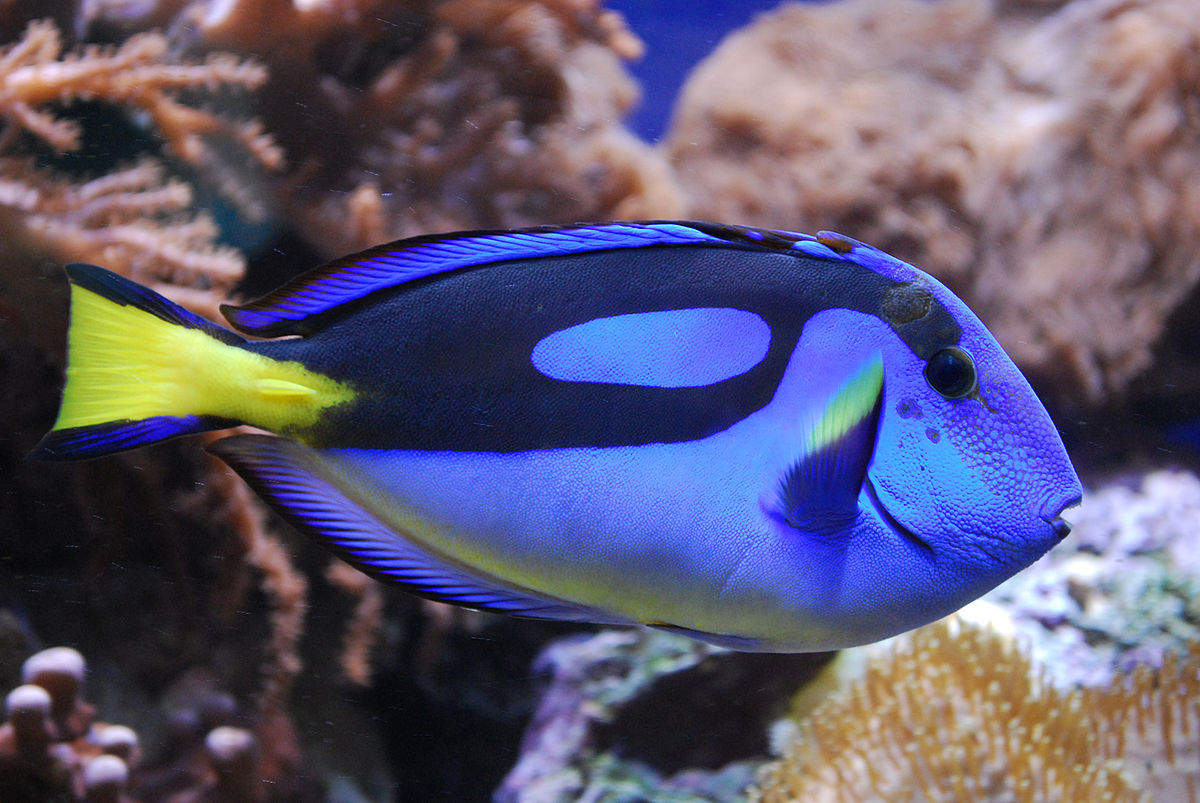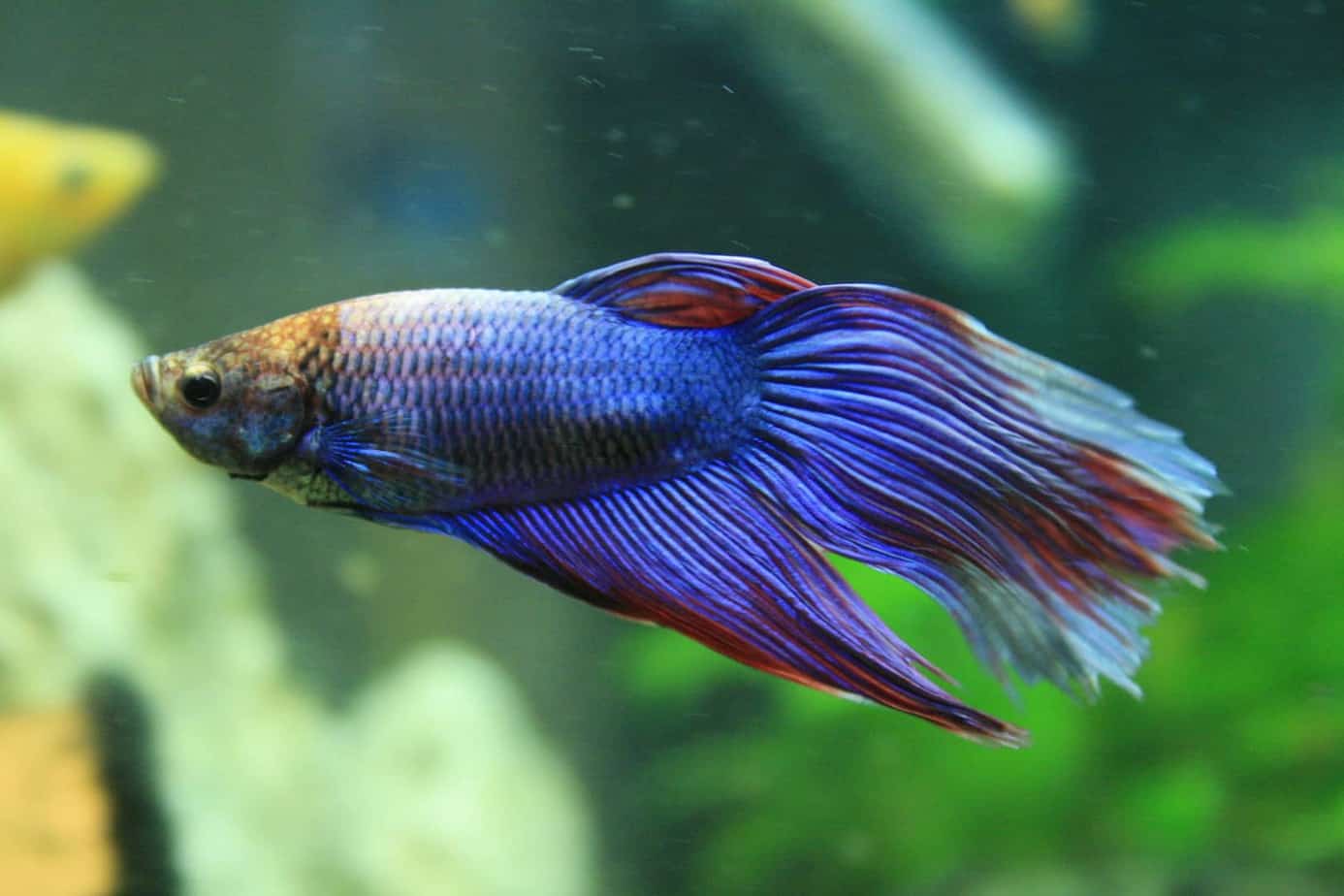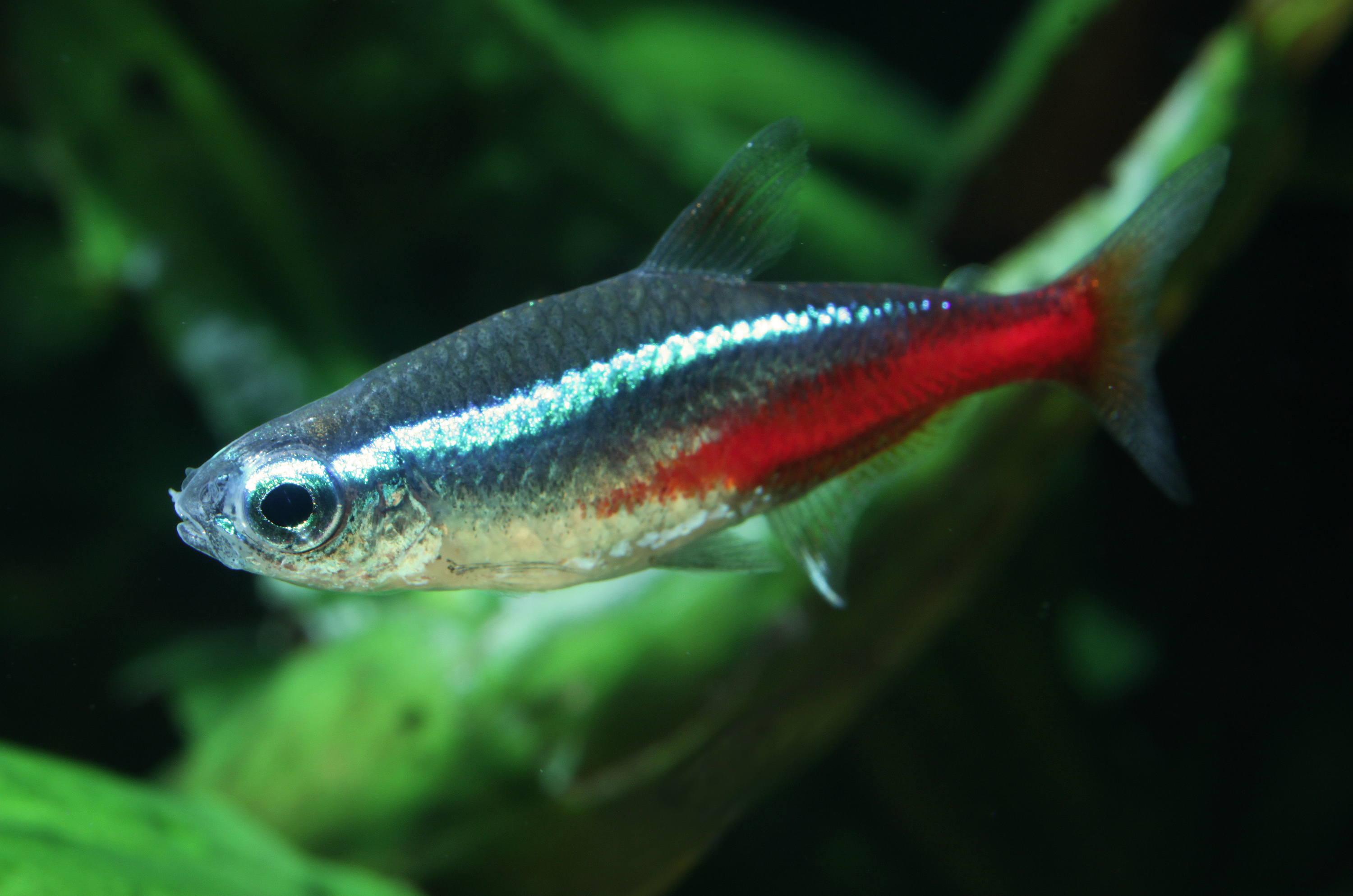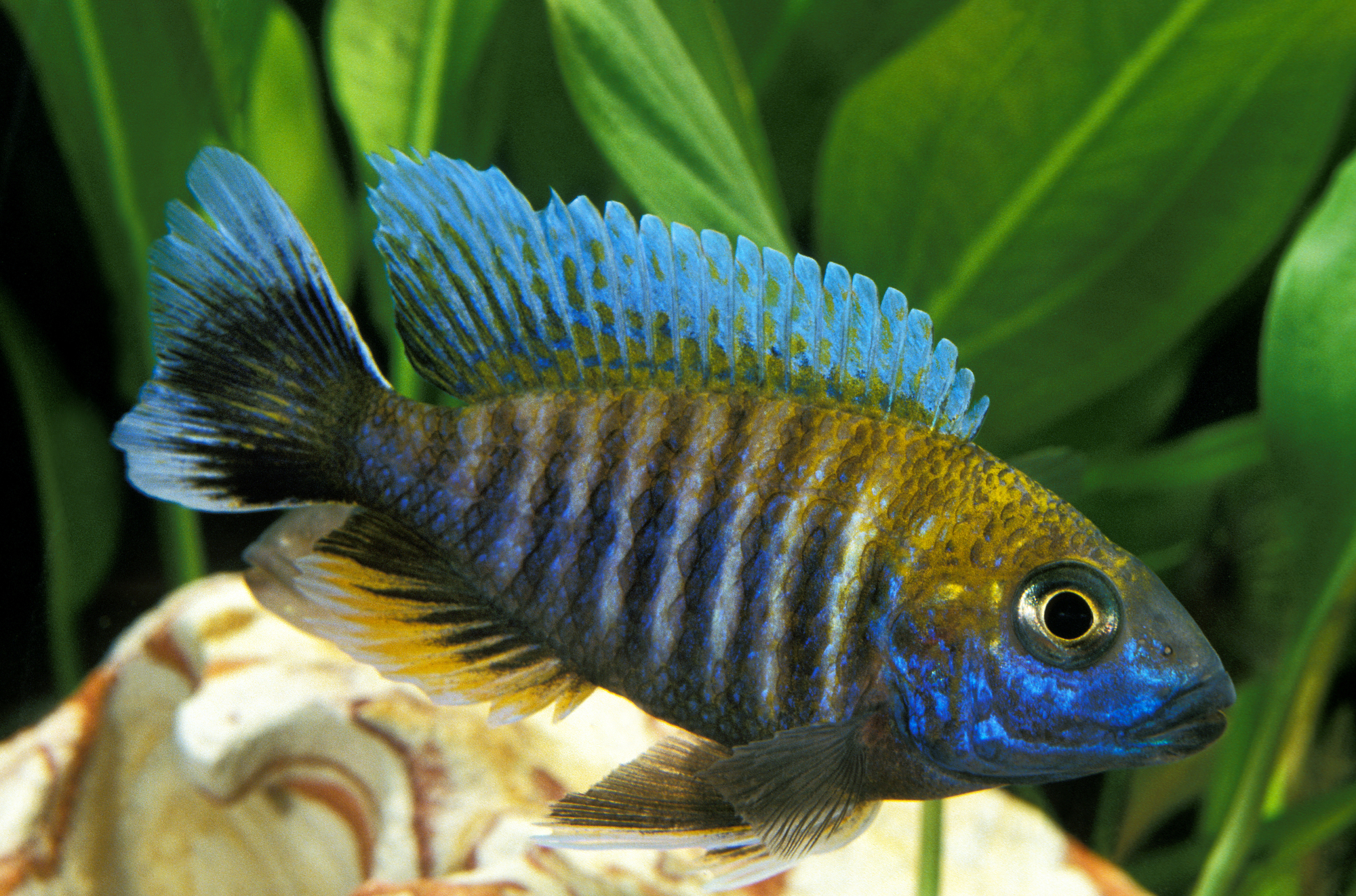Blue fish are a unique and special-looking addition to any aquarium. Blue is a rare color in nature, and some cultures cannot even differentiate it from green. This fascinating color palette belongs to some incredible species, as you’ll see here on our list of the top 12 blue fish.
From freshwater to saltwater, there are many different types of blue fish that can be kept in aquariums. In this article, we will introduce you to some of the most amazing blue fish species that you can keep in your own aquarium.
You are reading: 12 Types Of Blue Fish
We will also provide important information such as their scientific name, difficulty level, adult size, temperament, origin, minimum tank size, temperature, diet, and pH.

12 Types Of Blue Fish
Betta

Betta fish, also known as Siamese fighting fish, are a popular freshwater fish that are often kept in aquariums. They are well known for their territorial behavior and beautiful, brightly colored fins.
Betta fish come in a variety of colors, including blue. Blue Betta fish are a popular choice for aquarium enthusiasts due to their striking coloration.
Betta fish should be kept in a minimum 2-gallon tank with a temperature range of 75-80 degrees Fahrenheit. They are often kept alone in a small tank, but can also be kept with harmless species like snails.
Cichlid
Blue Cichlids are a popular type of freshwater fish that are often kept in aquariums. Here are some species of Blue Cichlids:
1. Aulonocara nyassae (Emperor Cichlid)
2. Blue Dolphin Cichlid
3. Electric Blue Johanni Cichlid
4. Sciaenochromis Fryeri (Blue Cichlid)
5. Sciaenochromis Ahli (Electric Blue Ahli)
The Blue Cichlid is native to Africa, particularly Lake Malawi, and is known for its bright blue coloration. They are generally peaceful fish, but can be territorial and aggressive towards other fish of the same species.
Blue Cichlids should be kept in a minimum 55-gallon tank with a temperature range of 75-82 degrees Fahrenheit. They are omnivores and should be fed a varied diet of both plant and animal matter.
Lake Kutubu Rainbowfish
Lake Kutubu Rainbowfish (Melanotaenia lacustris) is a freshwater fish species that is native to Lake Kutubu, a lake found within the Kikori River system in Papua New Guinea. It is also known as Turquoise Rainbowfish due to its deep blue, turquoise, and yellow coloration.
Lake Kutubu Rainbowfish is one of the 13 fish species endemic to Lake Kutubu. The lake was formed when debris from an erupting volcano blocked off a valley, and it is very remote.
Lake Kutubu Rainbowfish is a captivating and vibrant freshwater fish species that is beloved among aquarium enthusiasts. They are omnivores that feed on small crustaceans, insect larvae, and algae in their natural habitat.
Blue Guppy
Blue Guppies are a popular freshwater fish that are often kept in aquariums. Here are some species of Blue Guppies:
1. Male Blue Neon Guppy
2. Neon Blue Guppy
3. Blue Moscow Guppy
4. Japan Blue Gold Double Sword Guppy
5. Blue Cobra Guppy
Read more : Top 10 Weirdest Animals In The World
Blue Guppies are known for their bright blue coloration and are often bred for a variety of colors, patterns, and fin shapes. They are peaceful and easy to care for, making them ideal for beginners and community aquariums.
Blue Guppies should be kept in a minimum 10-gallon tank with a temperature range of 72-82 degrees Fahrenheit. They are omnivores and should be fed a varied diet of both plant and animal matter.
Dwarf Gourami
Dwarf Gourami (Trichogaster lalius) is a freshwater fish species that is native to India, West Bengal, Assam, and Bangladesh. It is a popular aquarium fish due to its vibrant colors, bold personality, and hardiness.
Dwarf Gourami is a labyrinth fish, which means it possesses a lung-like labyrinth organ for gulping oxygen directly from the air. This adaptation allows it to live in the shallow, oxygen-poor waters of its natural habitat.
Dwarf Gourami is a peaceful and shy fish that can be kept in a community aquarium with other peaceful fish. They should be kept in a minimum 10-gallon tank with a temperature range of 72-82°F (22-28°C).
Neon Tetra

Neon Tetra (Paracheirodon innesi) is a freshwater fish species that is native to blackwater and clearwater streams in the Amazon basin of South America. They are one of the most popular and recognizable fish in the aquarium hobby, known for their bright and vibrant colors.
Neon Tetras are shoaling fish and should be kept in groups of at least six in a minimum 10-gallon tank. They are peaceful and can be kept with other non-aggressive fish species.
Neon Tetras are omnivores and should be fed a varied diet of both plant and animal matter. They have a decently long life expectancy of 5 to 10 years.
Blue Peacock Cichlid

Blue Peacock Cichlid (Aulonocara nyassae) is a freshwater fish species that is native to Lake Malawi in Africa. They are known for their bright blue and yellow coloration, which is more prominent in males than females.
Blue Peacock Cichlids are mildly aggressive and should be kept with other non-aggressive fish species in a minimum 55-gallon tank. They prefer a sandy substrate and plenty of hiding places, such as rocks and caves. Blue Peacock Cichlids are omnivores and should be fed a varied diet of both plant and animal matter.
Blue Delta Guppy
Blue Delta Guppy (Poecilia reticulata) is a popular freshwater fish species that is often kept in aquariums. They are known for their striking blue coloration and are a favorite among aquarium enthusiasts.
Blue Delta Guppies are peaceful and can be kept with other non-aggressive fish species. They should be kept in a minimum 5-gallon tank with a temperature range of 74-82°F (23-28°C). Blue Delta Guppies are omnivores and should be fed a varied diet of both plant and animal matter.
Blue Ram Cichlid
Blue Ram Cichlid (Mikrogeophagus ramirezi) is a freshwater fish species that is native to the Orinoco River basin in Colombia and Venezuela. They are also known as German Blue Rams, Butterfly Cichlids, and Ramirez’s Dwarf Cichlids.
Read more : Top 10 Worlds Largest Dinosaurs Ever
Blue Ram Cichlids are popular aquarium fish due to their striking blue and yellow coloration, peaceful temperament, and hardiness. They are small in size, reaching only 2 inches in length. Blue Ram Cichlids should be kept in a minimum 20-gallon tank with a temperature range of 78-85°F (26-30°C). They are omnivores and should be fed a varied diet of both plant and animal matter.
Blue Discus
Blue Discus (Symphysodon aequifasciatus) is a freshwater fish species that is native to the Amazon River basin in South America. They are known for their striking blue coloration and are a favorite among aquarium enthusiasts.
Blue Discus are schooling fish and should be kept in groups of six or more in a minimum 50-gallon tank. They require a similar temperament and slow feeding habits in their tank mates. Blue Discus are omnivores and should be fed a varied diet of both plant and animal matter.
They prefer warm water temperatures between 82-86°F (28-30°C) and frequent water changes of at least 25%, twice per week, to maintain high water quality.
Blue Tang
Blue Tang (Paracanthurus hepatus) is a species of Indo-Pacific surgeonfish that is popular in marine aquariums. It is also known as the Pacific Blue Tang, Regal Tang, Hippo Tang, Blue Hippo Tang, Flagtail Surgeonfish, and Palette Surgeonfish.
Blue Tangs are best cared for in aquariums at least 6 feet in length by experienced marine aquarists. They are known for their vibrant electric blue body dressed with bold black markings, which begins at the eyes, traces the dorsal line down to the tail, and circles back above the pectoral fin to create a unique shape reminiscent of a painter’s palette.
Blue Tangs are herbivores and actively browse the surface of coral reefs, searching for their favorite algae. They are restricted to coral reefs in the Indo-Pacific and are often confused with two other surgeonfishes that inhabit the same waters, the doctorfish and ocean surgeonfish.
Yellowtail Blue Damselfish
Yellowtail Blue Damselfish (Chrysiptera parasema) is a popular saltwater fish species from the Indo-Pacific. Yellowtail Blue Damselfish is also known as Yellowtail Damselfish, Yellowtail Blue Damsel, Goldtail Demoiselle, and other variations. It was described by Fowler in 1918.
Yellowtail Blue Damselfish is a small marine fish that reaches 2.8-3 inches in length. It has a spiny dorsal fin and is laterally compressed. Yellowtail Blue Damselfish is blue with a distinctive yellow caudal fin (tail fin). The yellow coloring may extend up to the back of the anal and dorsal fins, especially in species from Papua New Guinea. These fish may also have yellow pelvic or pectoral fins.
However, yellow is never found on the backs or bellies of Yellowtail Blue damsels. Yellowtail Blue Damselfish is extremely hardy and gorgeously colored. They are considered by many aquarists, both beginning and experienced, as a great addition to a saltwater aquarium.
Yellowtail Blue Damselfish is one of the least aggressive in the damsel family. They are often called “Blue Devil Damsel” due to their temperament. Yellowtail Blue Damselfish should be kept in a minimum 20-gallon tank with a temperature range of 72-78°F (22-26°C). They are omnivores and should be fed a varied diet of both plant and animal matter.
FAQS
1. What are some popular blue fish species for aquariums?
– Betta
– Cichlid
– Lake Kutubu Rainbowfish
– Blue Guppy
– Dwarf Gourami
– Neon Tetra
– Blue Peacock Cichlid
– Blue Delta Guppy
– Blue Ram Cichlid
– Blue Discus
– Yellowtail Blue Damselfish
– Blue Tang
2. What is the minimum tank size for blue fish species?
The minimum tank size varies depending on the species. For example, Betta fish should be kept in a minimum 2-gallon tank, while Blue Discus should be kept in a minimum 50-gallon tank.
3. What is the temperature range for blue fish species?
The temperature range also varies depending on the species. For example, Betta fish should be kept in a temperature range of 75-80 degrees Fahrenheit, while Blue Tangs should be kept in a temperature range of 82-86 degrees Fahrenheit.
4. What do blue fish species eat?
Blue fish species are omnivores and should be fed a varied diet of both plant and animal matter. The specific diet may vary depending on the species.
5. Can blue fish species be kept with other fish?
The compatibility of blue fish species with other fish varies depending on the species. Some species are peaceful and can be kept with other non-aggressive fish, while others are more aggressive and should be kept alone or with specific tank mates.
6. What is the origin of blue fish species?
The origin of blue fish species varies depending on the species. For example, Blue Discus is native to the Amazon River basin in South America, while Blue Tang is a species of Indo-Pacific surgeonfish.
Source: https://petstutorial.com
Category: Animals










